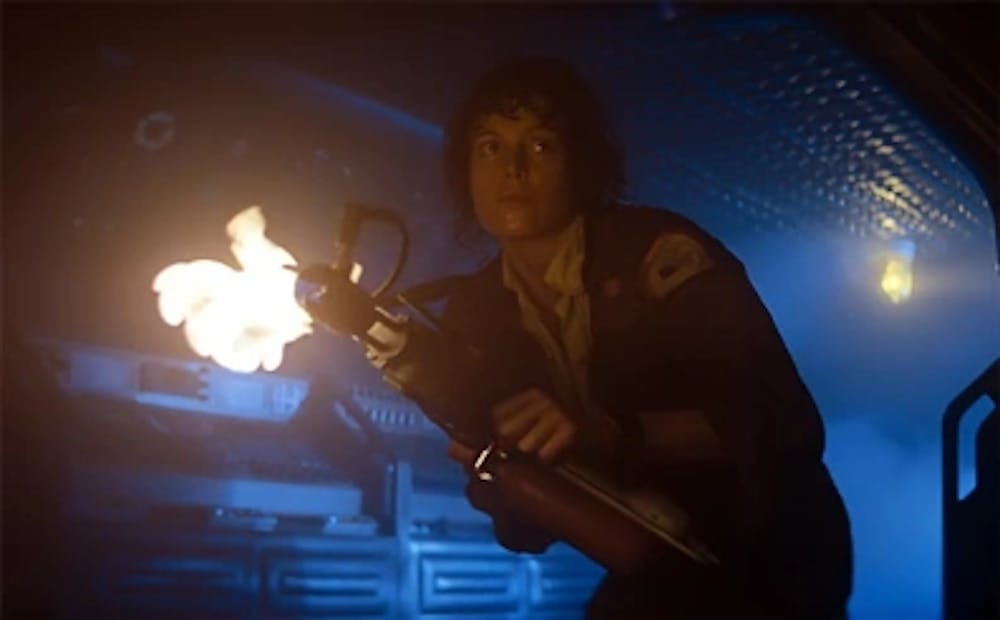With the recent release of “Alien: Romulus” and the announcement of “Alien: Earth,” it is worth revisiting the original “Alien” film that started it all.
Films that go above and beyond the standards of their genre often tend to be the most effective. “Alien” takes a traditional science fiction setting and adds horror elements to it, with the result being a film that still holds up after almost 50 years.
Part of the reason the film continues to work so well is due to its characters. When an alien bursts through the chest of one of the crew members, the crew watches in shock - just as most of us would do. “Alien” focuses on making its characters relatable, allowing the audience to immediately build a connection with the characters.
Special effects from 50 years ago can often be hit or miss in terms of how they hold up, but in the case of this film, they add to the sense of horror. The chest-bursting scene is uncanny because of the rough movement of the alien combined with its being covered in blood. We hardly see the alien (Bolaji Badejo) throughout the film which makes it more terrifying. Notice that when it does appear, we usually only see brief glimpses of its mouth or arms. Even when we do see it, it is usually only for a brief moment before the camera cuts away. We never actually see the monster kill any of its victims, leaving their fates up to the viewer’s imagination.
When Ripley (Sigourney Weaver) is attempting to escape, the film cuts between her shaking hands and anxious expression as she activates the ship’s self-destruct sequence, allowing the audience to share her anxiety. In addition to this, the lights shuttering t add to the intensity of the scene, as she is now forced to make her way to the shuttle in darkness. Suddenly, she freezes.
There it is. After hours of not having seen it and only hearing the screams of her friends, all she can do is watch in horror as the alien blocks her path. Ripley represents the audience in this scene, as we are truly seeing the alien for the first time as well. By intentionally not showing the alien until now, we connect with Ripley’s fear and understand her.
The atmosphere of the film further helps us connect with the characters. When the crew investigates the crash site, the audience almost feels like they are investigating with the crew. The dim lighting adds a feeling of unease to the sequence as the audience is unsure of what is happening. The scene is almost silent apart from the heaving breathing of the crew, adding to the overall tension. This, combined with the gruesome remains of the crew, creates a feeling of discomfort in the audience, foreshadowing the threat that is to come.
When the crew is hunting the alien, the film is shot in a way that the audience the anxiety felt by the characters. The set is designed to make the ship feel smaller than it is; the corridors are enclosed. The only source of light is coming from the flashlights carried by the crew, creating a sense of uncertainty and claustrophobia in the viewer.
Despite being the title character, the alien itself only appears for about five minutes of the actual film. Even when it does appear we hardly see it, only catching glimpses of it in the darkness. This decision is what makes the film frightening in the first place, as it allows us to imagine what the creature looks like and what it does to its victims.
Many films have tried and failed to imitate the success of “Alien,” but they missed what made the movie work so well. The film’s power is derived from its knowledge of its audience. By portraying its protagonists as ordinary people in an extraordinary situation, viewers were able to connect with the people they saw on screen and identify with them. Combine that with the film using the audience’s imagination against them, and you get one of the greatest science fiction films and one of the greatest horror films ever made.
There never was a movie like “Alien” before it was released, and, quite frankly, there never will be ever again.

